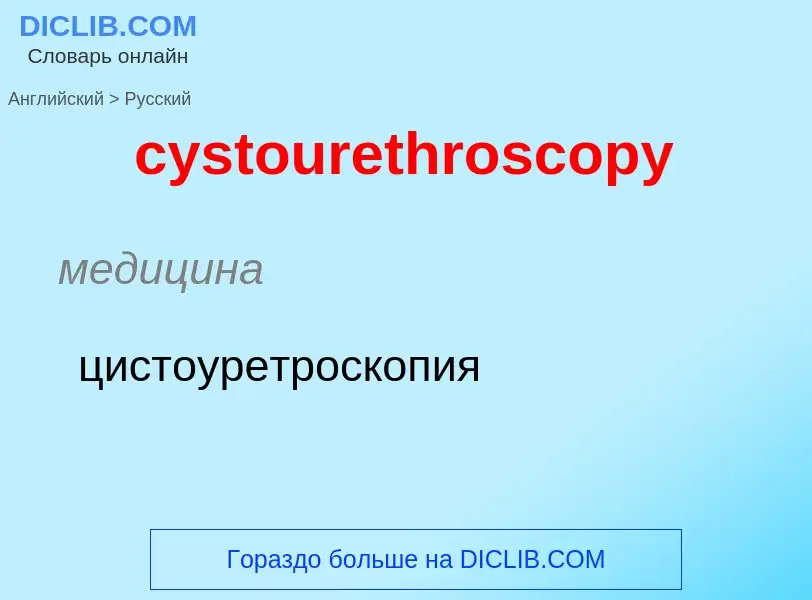Перевод и анализ слов искусственным интеллектом ChatGPT
На этой странице Вы можете получить подробный анализ слова или словосочетания, произведенный с помощью лучшей на сегодняшний день технологии искусственного интеллекта:
- как употребляется слово
- частота употребления
- используется оно чаще в устной или письменной речи
- варианты перевода слова
- примеры употребления (несколько фраз с переводом)
- этимология
cystourethroscopy - перевод на русский
медицина
цистоуретроскопия
[si'stɔskəpi]
медицина
цистоскопия
существительное
медицина
цистоскопия
['sistəskəup]
медицина
цистоскоп
существительное
общая лексика
цистоскоп
Определение
Википедия
Cystoscopy is endoscopy of the urinary bladder via the urethra. It is carried out with a cystoscope.
The urethra is the tube that carries urine from the bladder to the outside of the body. The cystoscope has lenses like a telescope or microscope. These lenses let the physician focus on the inner surfaces of the urinary tract. Some cystoscopes use optical fibres (flexible glass fibres) that carry an image from the tip of the instrument to a viewing piece at the other end. Cystoscopes range from pediatric to adult and from the thickness of a pencil up to approximately 9 mm and have a light at the tip. Many cystoscopes have extra tubes to guide other instruments for surgical procedures to treat urinary problems.
There are two main types of cystoscopy—flexible and rigid—differing in the flexibility of the cystoscope. Flexible cystoscopy is carried out with local anaesthesia on both sexes. Typically, a topical anesthetic, most often xylocaine gel (common brand names are Anestacon and Instillagel) is employed. The medication is instilled into the urethra via the urinary meatus five to ten minutes prior to the beginning of the procedure. Rigid cystoscopy can be performed under the same conditions, but is generally carried out under general anesthesia, particularly in male subjects, due to the pain caused by the probe. The sizes of the sheath of the rigid cystoscope are 17 French gauge (5.7 mm diameter), 19 Fr gauge (6.3 mm diameter), and 22 Fr gauge (7.3 mm diameter).

![A sterile flexible cystoscope in an [[operating theatre]] A sterile flexible cystoscope in an [[operating theatre]]](https://commons.wikimedia.org/wiki/Special:FilePath/Cystoscope-med-20050425.jpg?width=200)
